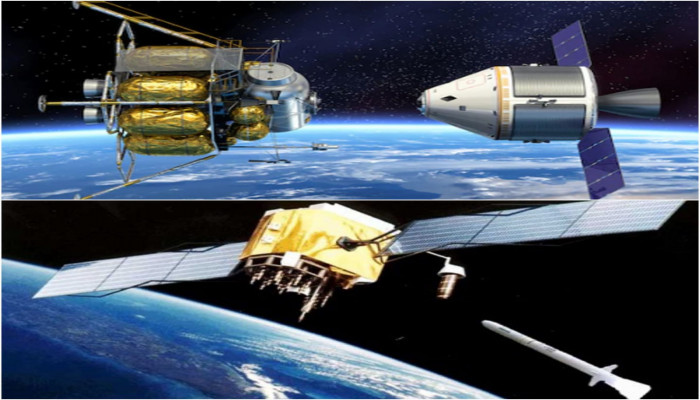India achieves milestone by successfully conducting 'dogfight' in space between chaser and target satellite
- In Reports
- 12:26 PM, May 05, 2025
- Myind Staff
India is currently carrying out an exceptional and refined "dogfight" in space, where a "chaser" satellite and a "target" satellite are operating around 500 kilometres above Earth. This comes after China conducted similar low Earth orbit drills with its defence satellites in 2024. The term "dogfighting" in space refers to tightly coordinated and close-range movements between satellites, similar to how fighter jets engage in aerial combat.
India’s latest effort is part of the Indian Space Research Organisation's (ISRO) ambitious SPADEX Mission, which aims to fulfil a mix of strategic and societal objectives. As part of this mission, two Indian satellites, moving at a blazing speed of 28,800 kilometres per hour, 28 times faster than passenger planes or bullets, are autonomously performing highly coordinated flight manoeuvres by ISRO. These satellites have been conducting complex proximity operations. The current high-speed interaction, likened to a “dogfight,” comes after a previous manually controlled orbital circling or parikrama of one satellite around the other, carried out a few weeks ago.
In an interview with NDTV, ISRO Chairman Dr. V Narayanan shared that India has already "successfully demonstrated docking and undocking twice over" as part of the SPADEX mission. He mentioned that after these extended docking and undocking operations, both satellites still had 50% of their fuel left. The head of ISRO pointed out that accurate launch execution of the rocket and effective control of the satellites' orbits have saved about 2.5 kilograms of fuel on each satellite, helping to extend how long the mission can operate.
Director and Founder of an independent foundation, Atma Nirbhar Soch, Brigadier (Retd) Anshuman Narang, lauded the step, saying, "Through this dogfight in space, ISRO is pushing the right technological frontier. It's a good thing that this technology demonstration of peaceful robotisation in space is through advanced swadeshi technology. This space modernisation and autonomization through indigenisation and intelligentisation is what today's Atmanirbhar Bharat needs."
A space analyst is closely watching China’s recent advancements in space technology. China has exhibited similar multi-satellite operations, raising concerns within the US Space Force about the narrowing technological edge between countries.
Meanwhile, ISRO successfully carried out its second satellite docking test with the SPADEX mission (SDX 01 and SDX 02) on April 20. The next day, the team achieved a power transfer between the two satellites, with one powering a heater element on the other. The power transfer lasted about four minutes, and the satellites operated as expected. This second docking was done entirely autonomously, starting from a 15-meter distance, while the first test included a manual pause at 3 meters. The second docking experiment was preceded by thorough ground tests and on-orbit trials, building on insights from the first docking and undocking. This helped improve confidence for the second demonstration. Successfully carrying out the fully autonomous docking and power transfer marks a significant achievement for the SPADEX mission.
The first docking took place on January 16 this year, with ISRO successfully docking two Indian satellites in space at 475 kilometres above Earth. This made India the fourth country, after Russia, the USA, and China, to achieve satellite docking.
The SpaDeX mission was launched on December 30 last year using the PSLV rocket. Docking technology is essential for future missions like Chandrayaan-4 and the Bhartiya Antariksha Station.







Comments